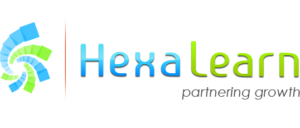SCORM Info Per Language
It seems easy: convert message, swap media, export new SCORM and upload to the LMS. But also for finding out developers, this method can insidiously double work, balloon expenditures, and add complexity to maintenance when creating multilingual eLearning training courses. Allow us find out how this affects the eLearning advancement procedure and just how Educational Designers and programmers can develop a lot more scalable multilingual solutions.
1 Advancement Expenses: Time, Equipment, And Version Control
Translation And Localization Bottlenecks
- Each training course upgrade– be it a brand-new examination, picture, or conformity alteration– suggests rebuilding every language translation. Developers require to repackage, re-test, and re-upload each data manually, reducing version cycles down.
- Localization teams must manage language-specific assets (sound, video, subtitles, message on-screen), every one of which need developer intervention for every SCORM result.
Authoring And SCORM Upkeep
- Developers frequently spend hours reconfiguring materializes, adjusting LMS monitoring, and verifying interactions for each variation.
- Each language becomes its own “mini-project,” boosting QA and LMS screening cycles for programmers and customers alike.
Storage Space And Release Difficulties
- Keeping multiple SCORM versions takes in additional repository space and LMS bandwidth. Programmers should additionally preserve regular documents structures throughout all versions to avoid confusion.
2 Indirect Advancement Costs: Intricacy And Threat
Variation Drift Throughout Languages
- When developers take care of numerous SCORM outputs, updates may not turn out uniformly. Learners in various regions may access obsolete versions– a concern that shows improperly on both L&D and compliance teams.
Higher Assistance Lots
- Bugs one-of-a-kind to one language variation typically call for developer-level debugging.
- Dissimilar SCORM settings can create inconsistent LMS tracking or completion reporting– draining pipes advancement and assistance sources.
Scalability Roadblocks
- For eLearning developers, every extra language suggests brand-new authoring, QA, and product packaging tasks. As multilingual need expands, preserving parity across variations becomes unsustainable.
3 Impact On Learning Experience
Postponed Rollouts
- Learners might wait weeks for upgraded variations in their language because programmers are active rebuilding multiple SCORMs.
Irregular Understanding Top Quality
- Differences in navigating tags, inscriptions, or UI formats across versions can confuse learners and break layout consistency.
- Without merged growth operations, access elements (alt text, transcripts, subtitles) may differ in top quality from one language to an additional.
Smarter Techniques For Creating Multilingual eLearning
Produce One Course– Publish in Many Languages
New authoring software program enable programmers to construct a solitary SCORM package with language selection controls. This technique maintains the course reasoning systematized however conserves the translations as modular resources– making it much simpler to get regular outcomes across languages.
Funded material – write-up continues below
Trending eLearning Authoring Devices
Externalize Text And Media Possessions
By keeping message, subtitles, and UI tags in exterior source documents (e.g., XLIFF, JSON, XML) the SCORM can be changed by designers in terms of translations without recreating the entire SCORM. This method helps with quicker updates and improved partnership in between localization teams and Instructional Developers.
Leverage LMS Localization Features
Many LMS systems sustain multilingual UI components, notices, and also training course titles. Designers can focus on content-level localization rather than replicating whole plans.
Automate QA And Version Control
Integrating variation control (e.g., Git, SVN) and automation devices aids eLearning developers track modifications, rebuild multilingual training courses effectively, and avoid version drift. Automated testing manuscripts can check for damaged web links, missing subtitles, or inconsistent shows up throughout languages.
The Advancement ROI
Mounting the concern from an advancement viewpoint aids stakeholders understand the business case:
- Minimized work
For eLearning programmers: fewer rebuilds and manual product packaging jobs. - Faster updates
Across all languages when regulative or material modifications happen. - Regular student experience
Across locales, enhancing high quality and involvement. - Reduced long-term maintenance prices
Making it possible for teams to scale worldwide discovering programs efficiently.
Verdict
For eLearning programmers, having different SCORM files by language can make an easy localization job into an upkeep frustration. Truth potential remains in rethinking establishing multilingual eLearning design– accepting modular, automation-centered design concepts that simplify localization, warranty variation uniformity, and preserve high quality at range.
With the execution of central web content versions, LMS localization capacities, and automation systems, development teams have the ability to bypass laborious SCORM packaging repetition to concentrate on what is most important: the layout of engaging, accessible, and effective understanding experiences for worldwide target markets. This unified method not only simplifies material shipment yet also makes certain consistent student interaction and performance across all languages and areas.
